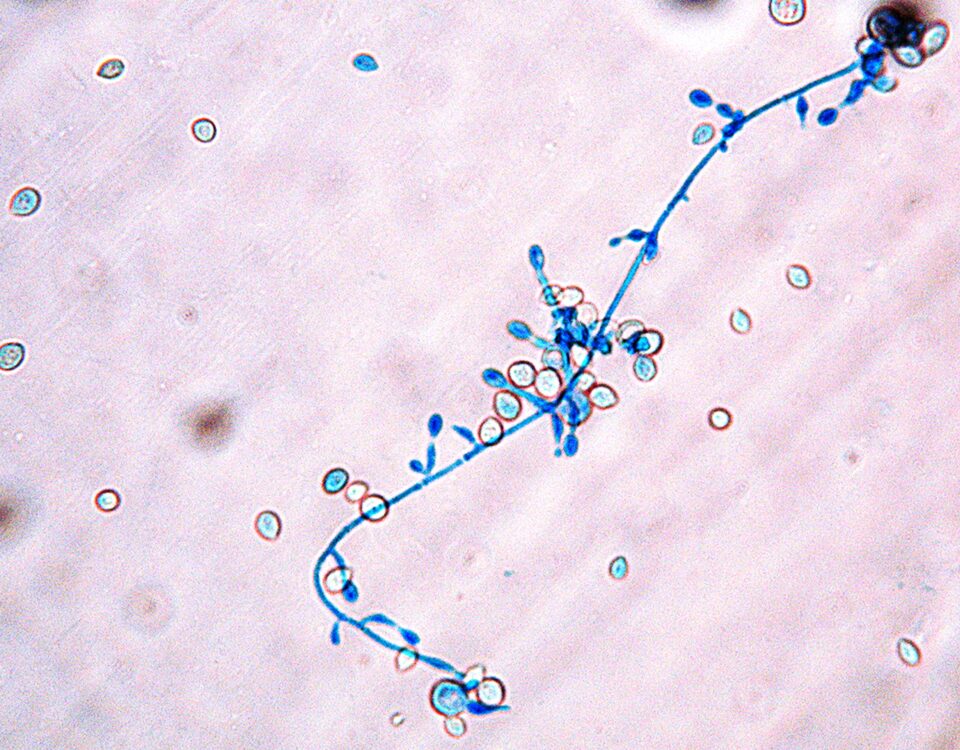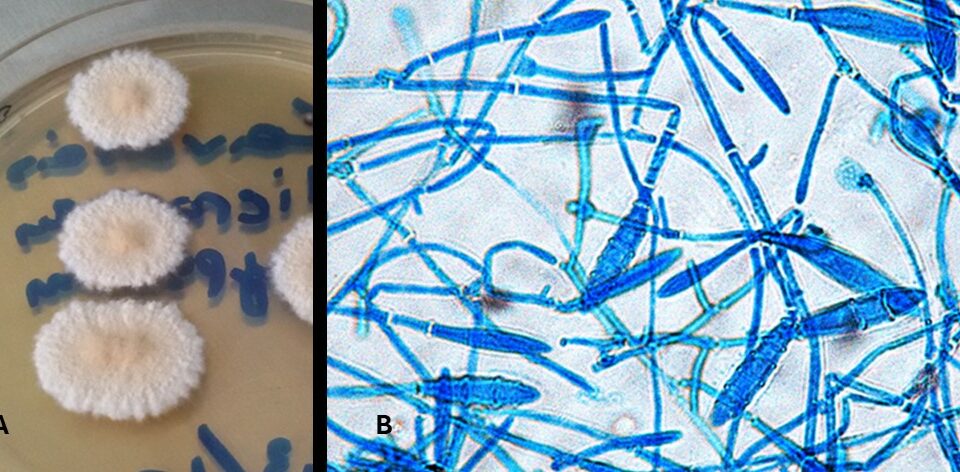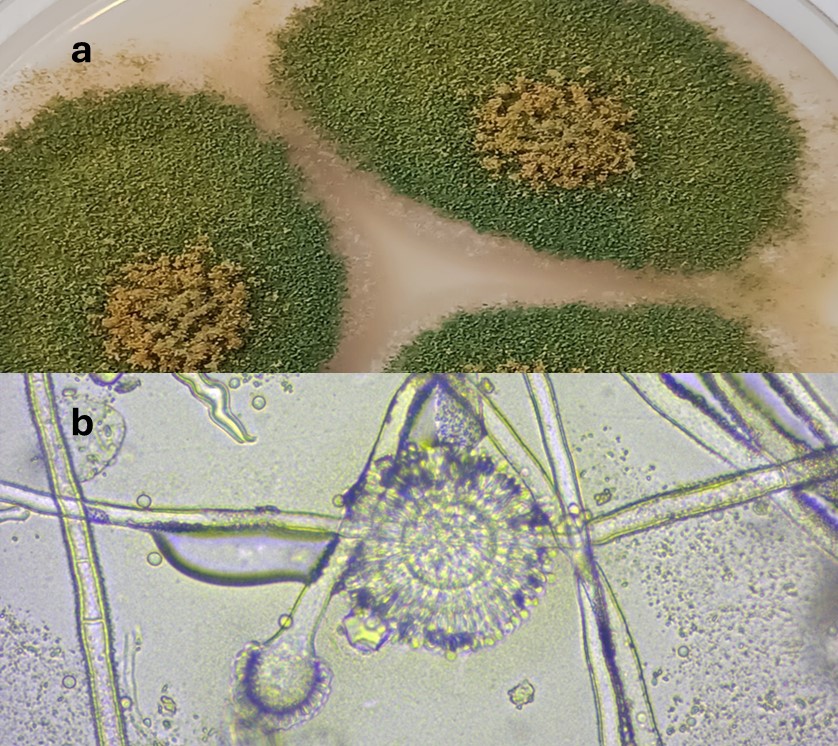
Balkan Fungus 2026 – 4th Balkan Conference on Medical Mycology and Mycotoxicology, October 1-3, 2026 in Cluj-Napoca, Romania
December 4, 2024
Laboratory and clinical aspects of the surveillance of healthcare-associated infections: a theoretical and practical approach, EUCIC Certificate Programme_2024-2026 – Athens, Greece (22 – 25 January 2025)
January 13, 2025
(Photo: Anastasia Spiliopoulou, Medical School, University of Patras)
Trichosporon asahii
Trichosporon asahii is an opportunistic pathogen causing infections in immunocompromised patients, with a mortality rate of approximately 64%. Fungemia is the most common clinical presentation of invasive infection caused by Trichosporon, and is particularly associated with central venous catheters, which the fungus colonizes and forms biofilms on.
Morphology and Diagnosis
Colonies are white to creamy, brain-like in appearance, and microscopic examination shows blastoconidia, hyphae, pseudohyphae, and arthroconidia. It is urease-positive and does not form germ tubes. Identification can be achieved via: sugar assimilation tests (e.g., API 20 C AUX, API ID 32 C), automated biochemical systems (e.g., Vitek 2), MALDI-TOF MS.
Resistance Profile
Trichosporon asahii exhibits intrinsic resistance to echinocandins, which can lead to breakthrough infections in patients on these antifungal agents.
Treatment: Voriconazole (or posaconazole) is the treatment of choice. Amphotericin B is a second-line option.
[Case editor: Anastasia Spiliopoulou, Assistant Professor of Microbiology, Medical School, University of Patras]
References
Commenges A, Coucheney F, Lessard MH, Drider D, Steve Labrie S. Trichosporon asahii: Taxonomy, health hazards, and biotechnological applications. Fungal Biology Reviews 2024; 100369, https://doi.org/10.1016/j.fbr.2024.100369
Chen SC, Perfect J, Colombo AL, Cornely OA, Groll AH, Seidel D, Albus K, de Almedia JN Jr, Garcia-Effron G, Gilroy N, Lass-Flörl C, Ostrosky-Zeichner L, Pagano L, Papp T, Rautemaa-Richardson R, Salmanton-García J, Spec A, Steinmann J, Arikan-Akdagli S, Arenz DE, Sprute R, Duran-Graeff L, Freiberger T, Girmenia C, Harris M, Kanj SS, Roudbary M, Lortholary O, Meletiadis J, Segal E, Tuon FF, Wiederhold N, Bicanic T, Chander J, Chen YC, Hsueh PR, Ip M, Munoz P, Spriet I, Temfack E, Thompson L, Tortorano AM, Velegraki A, Govender NP. Global guideline for the diagnosis and management of rare yeast infections: an initiative of the ECMM in cooperation with ISHAM and ASM. Lancet Infect Dis. 2021;21(12):e375-e386. doi: 10.1016/S1473-3099(21)00203-6



